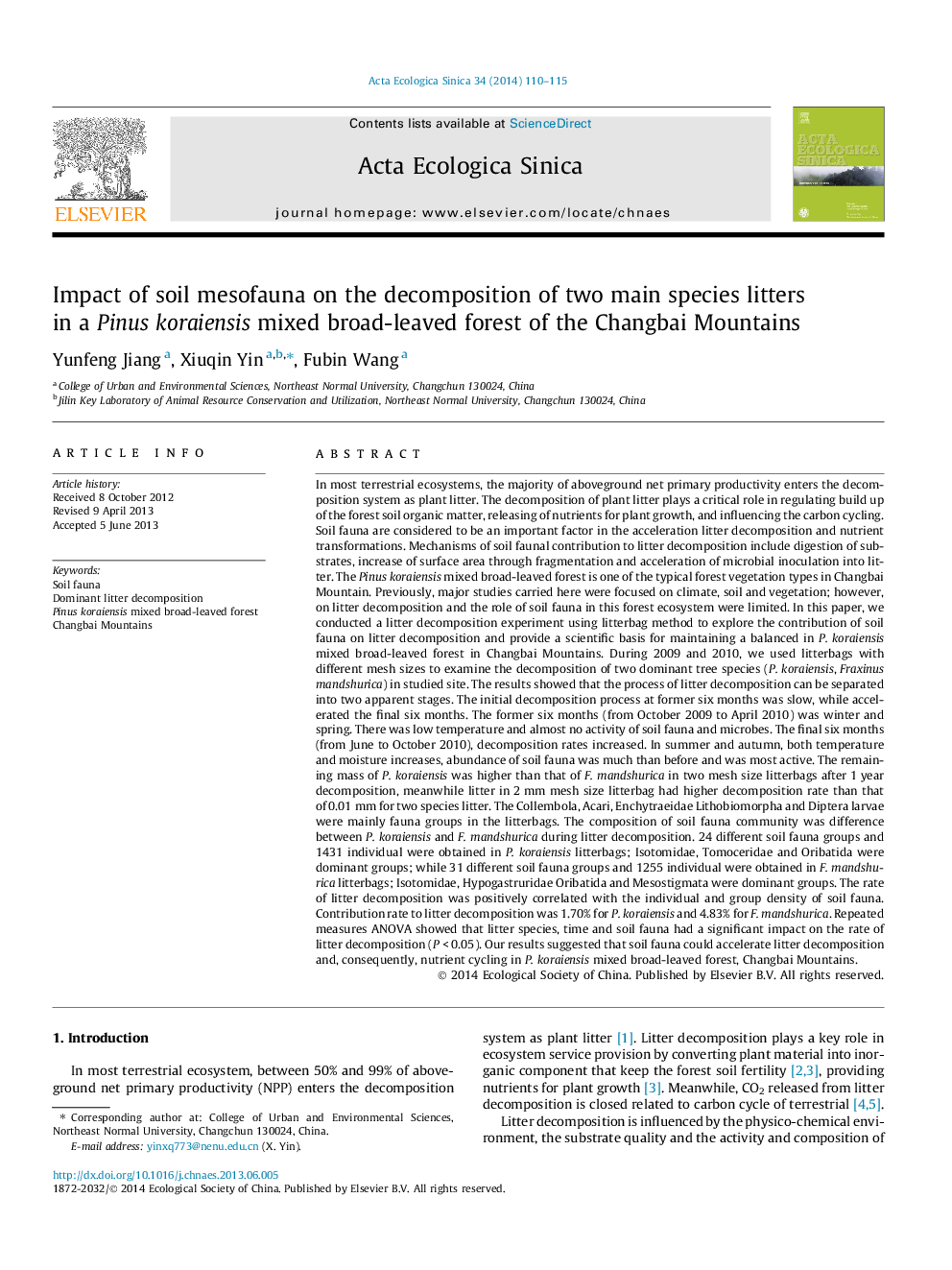| Article ID | Journal | Published Year | Pages | File Type |
|---|---|---|---|---|
| 4379989 | Acta Ecologica Sinica | 2014 | 6 Pages |
Abstract
In most terrestrial ecosystems, the majority of aboveground net primary productivity enters the decomposition system as plant litter. The decomposition of plant litter plays a critical role in regulating build up of the forest soil organic matter, releasing of nutrients for plant growth, and influencing the carbon cycling. Soil fauna are considered to be an important factor in the acceleration litter decomposition and nutrient transformations. Mechanisms of soil faunal contribution to litter decomposition include digestion of substrates, increase of surface area through fragmentation and acceleration of microbial inoculation into litter. The Pinus koraiensis mixed broad-leaved forest is one of the typical forest vegetation types in Changbai Mountain. Previously, major studies carried here were focused on climate, soil and vegetation; however, on litter decomposition and the role of soil fauna in this forest ecosystem were limited. In this paper, we conducted a litter decomposition experiment using litterbag method to explore the contribution of soil fauna on litter decomposition and provide a scientific basis for maintaining a balanced in P. koraiensis mixed broad-leaved forest in Changbai Mountains. During 2009 and 2010, we used litterbags with different mesh sizes to examine the decomposition of two dominant tree species (P. koraiensis, Fraxinus mandshurica) in studied site. The results showed that the process of litter decomposition can be separated into two apparent stages. The initial decomposition process at former six months was slow, while accelerated the final six months. The former six months (from October 2009 to April 2010) was winter and spring. There was low temperature and almost no activity of soil fauna and microbes. The final six months (from June to October 2010), decomposition rates increased. In summer and autumn, both temperature and moisture increases, abundance of soil fauna was much than before and was most active. The remaining mass of P. koraiensis was higher than that of F. mandshurica in two mesh size litterbags after 1Â year decomposition, meanwhile litter in 2Â mm mesh size litterbag had higher decomposition rate than that of 0.01Â mm for two species litter. The Collembola, Acari, Enchytraeidae Lithobiomorpha and Diptera larvae were mainly fauna groups in the litterbags. The composition of soil fauna community was difference between P. koraiensis and F. mandshurica during litter decomposition. 24 different soil fauna groups and 1431 individual were obtained in P. koraiensis litterbags; Isotomidae, Tomoceridae and Oribatida were dominant groups; while 31 different soil fauna groups and 1255 individual were obtained in F. mandshurica litterbags; Isotomidae, Hypogastruridae Oribatida and Mesostigmata were dominant groups. The rate of litter decomposition was positively correlated with the individual and group density of soil fauna. Contribution rate to litter decomposition was 1.70% for P. koraiensis and 4.83% for F. mandshurica. Repeated measures ANOVA showed that litter species, time and soil fauna had a significant impact on the rate of litter decomposition (PÂ <Â 0.05). Our results suggested that soil fauna could accelerate litter decomposition and, consequently, nutrient cycling in P. koraiensis mixed broad-leaved forest, Changbai Mountains.
Keywords
Related Topics
Life Sciences
Agricultural and Biological Sciences
Ecology, Evolution, Behavior and Systematics
Authors
Yunfeng Jiang, Xiuqin Yin, Fubin Wang,
